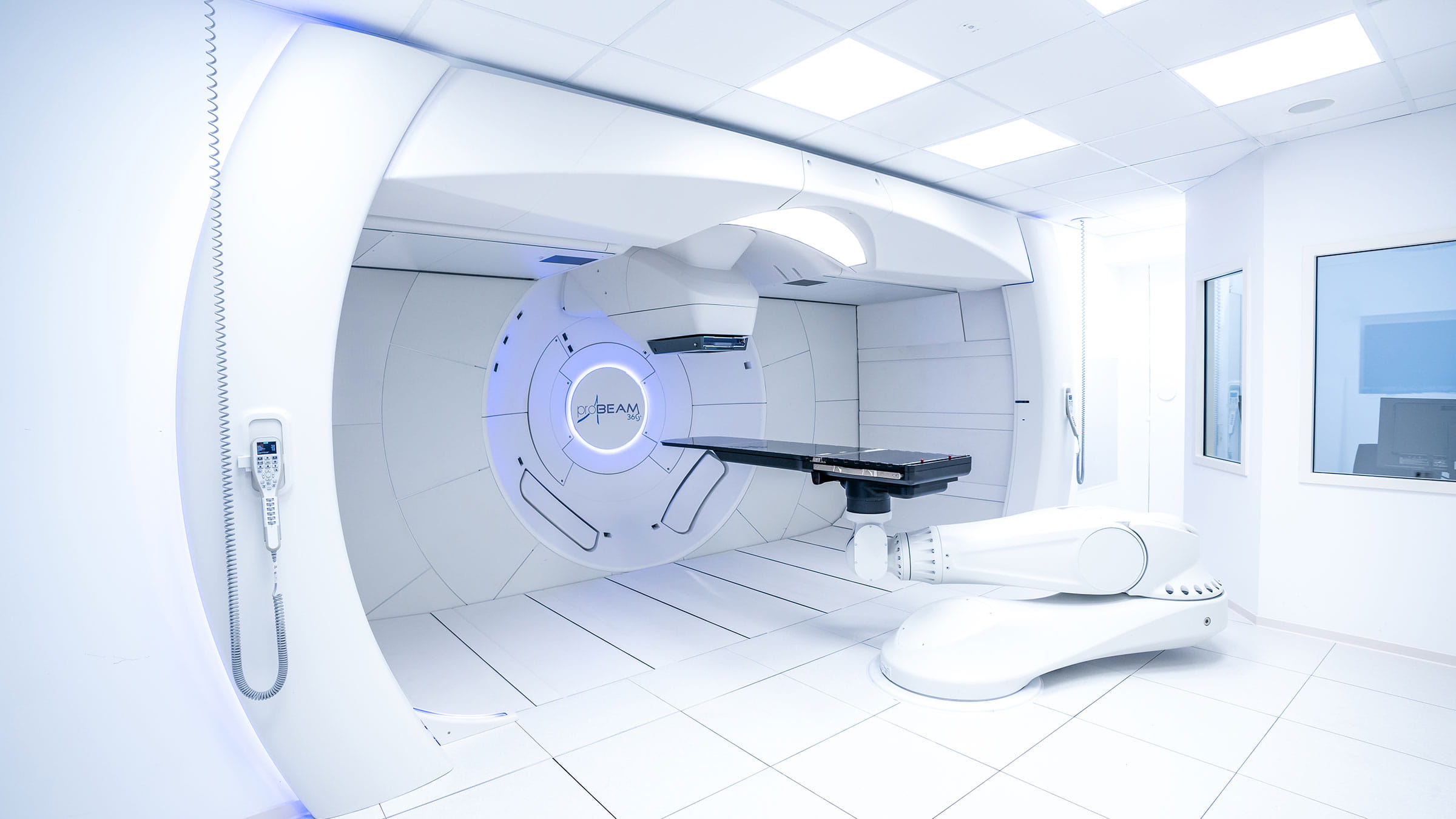
- Question What is proton therapy?
-
Answer
Proton therapy is a cutting-edge form of radiation treatment that uses protons, or positively charged particles found within atoms, instead of X-rays to kill cancer cells.
- Question How does proton therapy work?
-
Answer
From outside the body, a machine called a cyclotron delivers a high-energy proton beam painlessly through the skin to the tumor.
- Question What are the advantages of proton therapy for cancer?
-
Answer
Proton therapy precisely targets tumor cells, limiting radiation exposure and consequent damage to healthy surrounding tissue and organs, and reducing the chance of short- and long-term side effects that could impact quality of life compared to conventional radiation. Because proton therapy results in fewer complications and side effects, clinicians can sometimes deliver higher doses of radiation to tumors, enhancing curative potential.
- Question What types of cancer can be treated by proton therapy?
-
Answer
Proton therapy can be used alone or with therapies such as surgery and chemotherapy to treat many types of localized cancer (cancer that hasn’t spread). These include prostate, brain, breast, head-and-neck, lung, liver, pancreatic, spine and gastrointestinal cancers in adults, and brain cancer, lymphoma, retinoblastoma and sarcoma in children.
- Question What is the success rate of proton therapy?
-
Answer
According to the National Association for Proton Therapy (NAPT), multiple studies have demonstrated that patients treated with proton therapy experience improved survival rates when compared to patients treated with other radiation treatment modalities. Proton therapy also significantly reduces a patient’s chances of later developing a secondary cancer due to radiation treatment.
- Question Are there any side effects of proton therapy?
-
Answer
Although proton therapy reduces side effects by more precisely directing the radiation beam to the tumor and sparing surrounding tissue and organs, there still may be some side effects, albeit generally less than with conventional radiation.
- Question What is FLASH treatment?
-
Answer
FLASH is an even newer and more highly targeted form of proton therapy that is being studied in preclinical models and is not yet approved by the U.S. Food and Drug Administration. Preclinical data have demonstrated that FLASH therapy could reduce a typical weeks-long treatment regimen to a single treatment delivered in less than a second. The Ohio State University’s forthcoming proton therapy center is being built with a dual-capability system that can deliver both conventional proton therapy and FLASH therapy, which will be investigated at the center in clinical trial participants with certain newly diagnosed, recurrent or advanced cancers.
Image courtesy of Varian Medical Systems, Inc. All rights reserved.

The choice is clear
Our experts develop and deliver the most advanced targeted treatments leading to better outcomes and more hope.
Learn More




